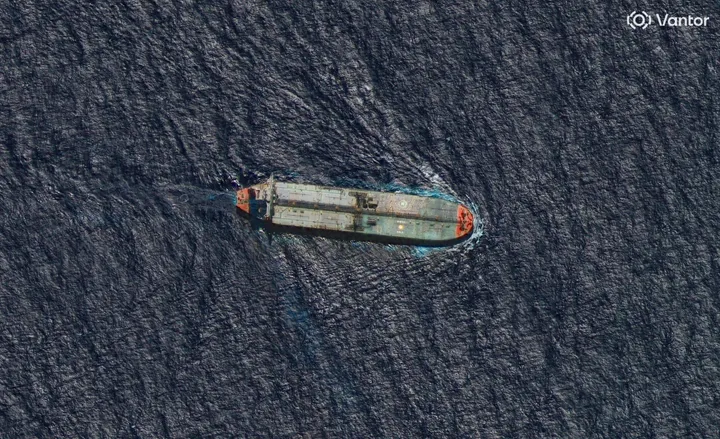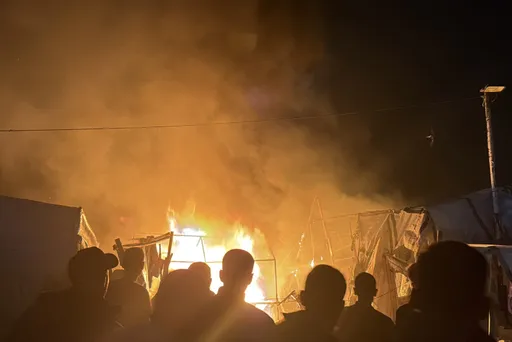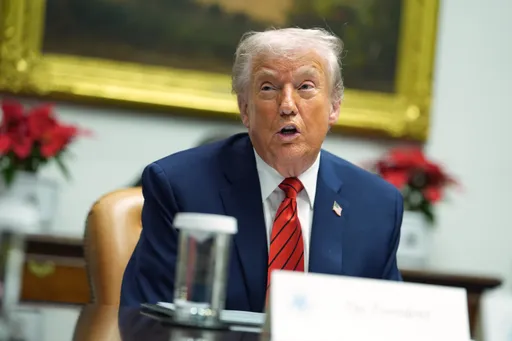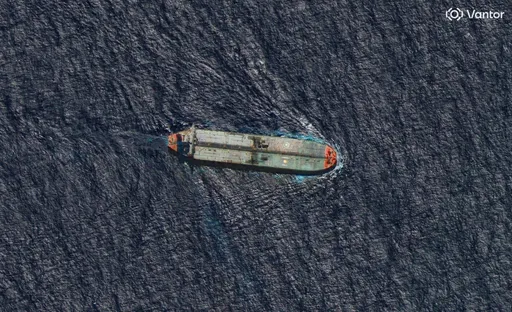Amidst the pandemic during winter lockdown in the UK, I met Yordanos* and her friend on Friday, November 13. We saw each other from across the street, as I was on my way to the supermarket. We made eye contact and I decided to walk over as I could immediately tell they were fellow Eritrean women.
We continued locking eyes until I stopped right in front of them, about 2 metres away, and they asked me if I was Eritrean to which I said yes (with tremendous enthusiasm, subconsciously hoping I can relieve a smidgen of their pain; the unimaginable trauma of having to be involuntarily uprooted, to migrate and smuggle your way into what you hope is a better life).
Much wasn’t said after, other than simply being physically present, invisibly hugging each other tightly and greeting each other by nodding our heads.
They briefly shared with me that they were staying in the accommodation right behind where they were standing for the next 14 days, a temporary hostel. Thoughts quickly rushed through me: Where will they go next? Will they be separated into family homes?
Thinking back, much did not need to be said as we all basked in a strong non-verbal connection locked in our bodies, serving us a sense of comfort, belongingness and togetherness, something we were all craving, even more in these trying times.
The next day I decided to walk down the same path hoping we would see each other again. This time it was just Yordanos’ friend, outside the building crouched down in the same spot we had greeted each other across the street, simply savouring her cigarette. She spots me. We nod at each other and I decide to let her enjoy her me-time.
The following day I met the young men in the group: Yordanos introduces me to Temesgen* and Temesgen (they have the same name) and another very young boy whose name Yordanos couldn’t quite remember. He slowly walks over, and I find myself trying to hold back instant tears, but they well up, as I catch a glimpse of his heartbreakingly sad and tired eyes.
In that moment, silence takes over and imagery engulfs me. How much death and anguish they all must have endured in the last decade and a half of their lives to make it out of their country, our country. The very same route we and our forefathers, mothers, brothers, sisters, aunts, uncles, and cousins took hoping to change our lives for the better, dreaming without doubt.
At the same time, this young boy also appeared numb and stiff to it all: the hallmark of Post-Traumatic Stress Disorder (PTSD).
The two Temesgens quickly looked at me, big smiles, and then bravely proceeded to say “Miliye!” (my Eritrean nickname) and shared with me (in Tigrinya) that I “smell very, very European” and then we all erupted into a big belly laugh. They don’t want me to leave and immediately tell me that I must teach them English.
I eventually come to know that this particular group of young Eritreans met at sea on a small boat arranged by a smuggler in Libya, after fleeing Eritrea and walking thousands of miles to Sudan to eventually make it to Greece, Italy, UK, France and Germany alive - for what they hoped was a better future.
Many of their friends didn’t make it. The government views leaving as a crime and if you are caught, you are forced to join the military. Every day that I spend with them, they share stories of every single friend they lost at sea on their arduous journey.
Channelling pain into art
It occurs to us that the majority of the world started to discover Eritrea in 2015 when UK-bound migrant camps arose in the French port of Calais - the very same journey these young Eritrean women and men are still making, all these years later.
Migrants built an open-air town and named it “The Jungle,” while they attempted to get on lorries to the UK. Some succeeded, some died trying. As Eritreans, we all agree that’s not how we want to be seen.
Journalist Angelique Chrisafis reported one such instance for The Guardian: “Sarah, an Eritrean in her 30s, wheeled her one-year-old asleep in a pushchair. When pregnant, she and her husband, escaping ‘violence and rape’, had paid €2,500 ($3,050) each to board boats to Italy. He had drowned.”
“She had been trying and failing to board lorries to Kent at night and hide among merchandise, with her child in a sling under her jacket. She was now sleeping at the new Jules Ferry centre but said she still did not feel safe.”
Under the bleakest of circumstances is also where they tapped into their creativity and brought their spiritual endeavours along with them. Eritrean refugees made use of plastic sheeting and created a makeshift church; a beautiful women’s choir was launched to help ease the pain they and their children carried, to be released through deep prayer, sung out and chanted.
One lasting endeavour was a benefit album titled “The Calais Sessions,” put together by 20 refugees in The Jungle alongside professional musicians. The songs range from Middle Eastern pop to Eritrean hymns. As the visiting musicians noted: “the women of 'The Jungle' are not often heard.”
The story goes that the musicians met Eritrean female singers on a Sunday after their church service. The musicians had set up a generator-powered studio and asked these women if they would be interested in recording in their makeshift studio with them. The women accepted with tremendous enthusiasm, and their warmth and generosity is heard in their harmonised voices on the two tracks they recorded on the album.
Here they are singing their hearts out:
Tragically, a week after recording, their church was bulldozed. Their walls of safe space were gone in seconds. One more trauma to deal with, but they hold onto their faith for dear life and continue to muster the courage to hope for a better future.
To my surprise, in this current group, we have a photographer, a writer, a filmmaker, and a painter. Wait, should I tell them I’m an artist too? How is it that a group of artists managed to escape the frontlines and inevitably death?
They do not want to be reminded of the trepidation and dread of war and their long journey. They just want to look ahead.
In the meantime, we continue to receive daily reports of phone and internet lines being severed and there is no way to communicate with our family and loved ones back home.
Over the next few weeks, we discuss what art projects we can create together and they convince me to write my first poem about being a ‘third culture kid,’ and the Eritrean culture and customs that were brought and shared with the Western world.
Men Shemki? (What’s your name?)
Jebha abay! (Term the Eritrean Liberation Front use to express themselves)
Bravo is what they would tell me.
Bravo is what I stood for.
Bravo is my identity.
Bravo is my name.
Is it?
I just wanted to be the same.
I didn’t understand it.
The pain.
The culture they brought with them in the midst of all their shame.
Men shemki?
Milen. Mimi. Gual Gomera. (The descendant of Gomera)
Saameenee. (Give me a kiss on the cheek.)
Bravo za gualey. We are ze same. (Well done, my daughter. We are the same.)
Art can provide a platform to raise awareness and encourage refugees to realise their own potential as well. All we can hope for by sharing migrant stories through art is that other people will pay more attention.
We already know that the ones that make it to this side of the world inspire change in the world they left behind.
* To protect the migrants’ identities, their names have been changed.























